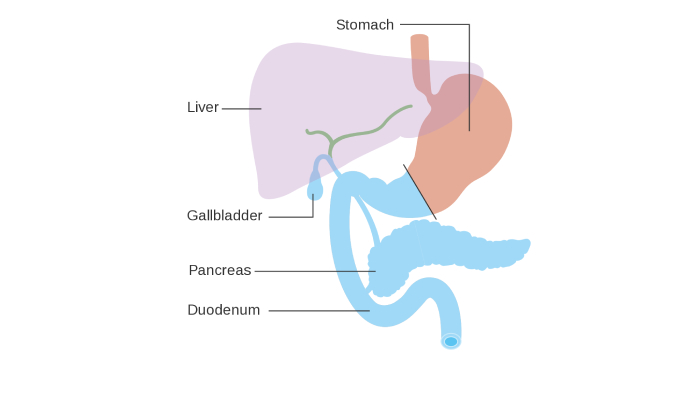Overview
A pancreatectomy is a surgical procedure to remove all or part of the pancreas. The pancreas, located in the abdomen behind the stomach, plays a crucial role in digestion and blood sugar regulation.
It has two primary functions:
✔ Digestive enzyme production – Helps break down food for proper digestion.
✔ Hormone production – Releases insulin and glucagon to regulate blood sugar levels and manage energy storage.
This surgery is typically performed to treat pancreatic tumors, chronic pancreatitis, or severe trauma to the pancreas. If you’re facing pancreatic disorders or need expert advice on pancreatectomy, consult Dr. Ujwal Zambare, the Best Gastroenterologist & Pancreatic Surgeon in Wakad, Pune for advanced diagnosis and treatment.

What Are The Conditions That Require Pancreatectomy?
Conditions affecting the pancreas sometimes require pancreatectomy. These include:
- Suspected, or proven cancer of the pancreas
- Lesions of the pancreas that could become cancerous
- Chronic pancreatitis that does not respond to conservative or endoscopic treatments
- Severe trauma to the pancreas
- Certain cysts in the pancreas
What Are The Types of Pancreatectomies?
Pancreatectomy is classified into several types:
Open or laparoscopic pancreatectomy
In open pancreatectomy, an open surgery is carried out to remove the pancreas while in laparoscopic pancreatectomy, a laparoscope is used for the surgery.
A laparoscopic surgery is done through three or four small incisions in the abdomen. Initially, carbon dioxide is introduced into the abdomen. The laparoscope is introduced through one of the incisions, which has a source of light and a small camera at the end. The pictures from the camera can be seen on a screen. Surgical instruments are introduced through the incisions and the surgery is carried out. Laparoscopic surgery results in reduced hospital stay and complications as compared to the open procedure. However, complicated procedures may not be possible through a laparoscope.
Robotic surgery is another new avenue that has improved the outcome in patients requiring pancreatectomy. It provides 3-dimensional imaging and allows a better view for surgery. It also allows the surgeon to use his hands comfortably. It is often used for more complicated surgeries where laparoscopy is not an option. However, the cost-effectiveness of the procedure should also be kept in mind.
Partial or total pancreatectomy
Surgical removal of the whole pancreas is called total pancreatectomy. Sometimes, a procedure called islet cell auto transplantation is combined with total pancreatectomy. In this procedure, islet cells that produce insulin are removed from the surgically excised pancreas and re-introduced into the liver of the patient.
When a part of the pancreas is removed, the surgery is called partial pancreatectomy. Due to its proximity to organs like the duodenum, stomach and spleen, some parts of these organs may need to be surgically removed.
What Are The Tests Recommended Before a Pancreatectomy Procedure?
Tests recommended before pancreatectomy will include those to diagnose the underlying condition, and to study the extent of the disease like cancer. Commonly used tests for pancreatic disease include blood tests, ultrasound,
What Are The Complications Associated with Pancreatectomy?
Complications associated with pancreatectomy include:
- Delayed gastric emptying, where the food does not pass quickly enough into the intestine
- Leakage of pancreatic enzymes into the abdomen from the site of attachment of the remaining pancreas
- Infection
- Bleeding
- Removal of spleen can result in reduced immunity
Dr. Ujwal Zambare at True Life Clinic & Wellness Center Wakad specializes in pancreatectomy, offering expert surgical care for conditions like pancreatic cancer, chronic pancreatitis, and tumors. If you need advanced diagnosis and treatment, consult the best Pancreatic Surgeon in Wakad, PCMC, Pune for personalized care. 📞 For appointments and more information, call: 098159 94279.
